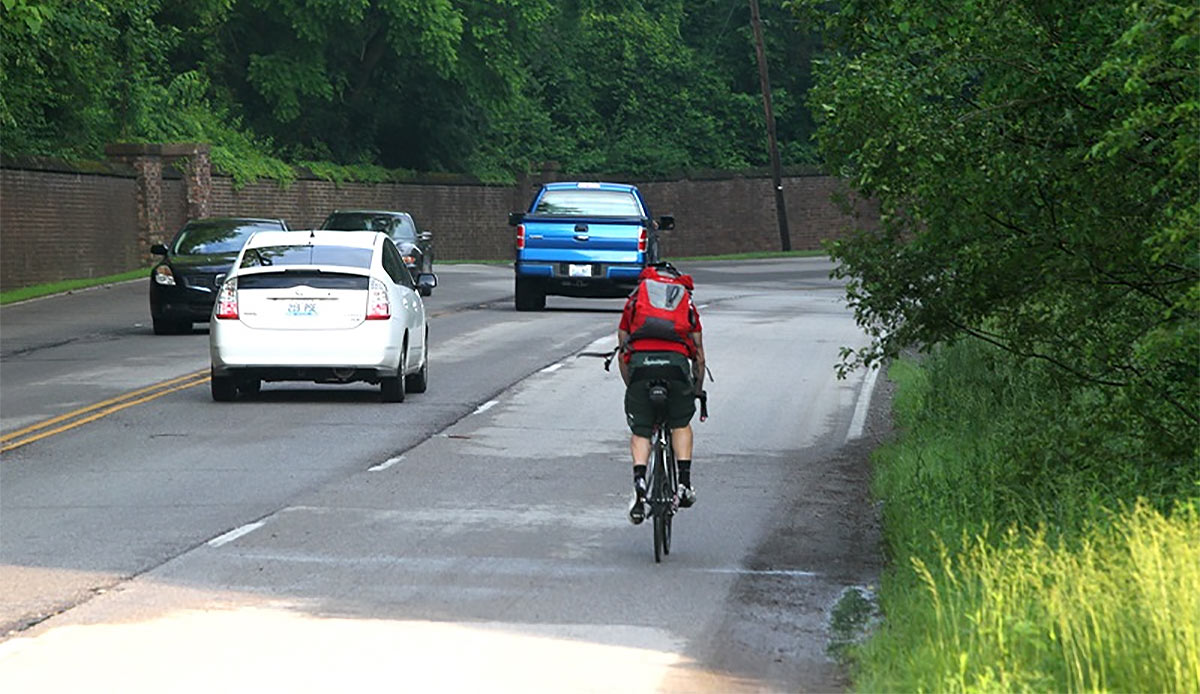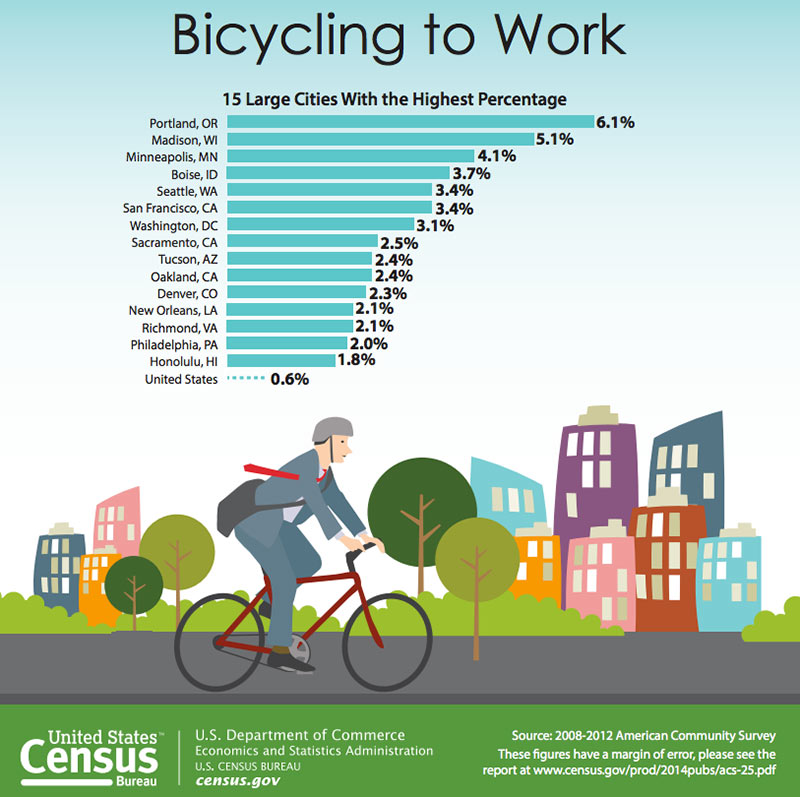Image: A cyclist commutes to work on Louisville’s annual Bike to Work Day. (Courtesy Metro Louisville)
Earlier this year, the Census Bureau released a piece on their “Newsroom” page about how biking to work in the United States has increased 60 percent since 2000—“the largest percentage increase of all commuting modes tracked by the 2000 Census and the 2008-2012 American Community Survey.” The article lists the top 15 bike commuting cities ranging from Honolulu at an estimated 1.8 percent, to Portland at 6.1 percent (the U.S. as a whole is at 0.6 percent).
“In recent years, many communities have taken steps to support more transportation options, such as bicycling and walking,” Brian McKenzie, a Census Bureau sociologist and the report’s author, said in a statement. “For example, many cities have invested in bike share programs, bike lanes and more pedestrian-friendly streets.”
In looking at the numbers for Louisville (Jefferson County), we find that since 2000 we’ve increased our bike commute percentage by 86 percent. Impressive, right? Actually, not really. The numbers behind that percentage increase are as follows: 737 workers age 16 or older out of a 329,091 population in Census 2000 (0.2 percent) versus an estimated 1,372 out of 343,060 on the last American Community Survey (0.4 percent).
But don’t get too dismayed. It’s important to remember that this is only data about commuting to work. And it’s probably not the best measure of the level of actual bicycling in a community. Elly Blue listed a lot of the problems with the Census Bike Commute numbers on Bicycling magazine’s blog, including the way they count, the way they attribute primary mode, and, of course, the exclusion of non-work related trips. Elly described how a phone survey in Portland found much higher levels of cycling than the 6 percent bike commuting estimate reported in the American Community Survey.
Check out the ACS estimates for Louisville census tracts on the map above. Only three census tracts in Louisville Metro had estimates with more than 5 percent commuting to work via bike.




Agree with the points made in the Bicycling magazine blog. It is a flawed count, to be sure. Also agree that an an 86% increase(!) sounds much more impressive than the raw numbers, which themselves sound a bit more impressive than the relative percentages of popluation.
But – I would contend that, despite the flaws, the numbers are really decent proxies (and certainly the best we have to currently work with) for an admittedly nebulous concept of bike culture in a particular city. It is a rough gauge of a broad concept. I wouldn’t shout praise of an 86% improvement from the tops of Floyds Knobs, but I do think it is indicative of more people biking (including some of the ‘missed’ groups with census commute data).
I’ve often thought that some kind of incentivized (to register and attach tag), passive RFID scheme would be a great source of data. But even though prices on that stuff are way down, it would still be expensive, there would be the creepy big brother factor, and there would be obvious bias in the data (skewed toward affluent, knowledgeable, civic-minded and missing a lot of Wal-Mart-procured-bike cyclists).